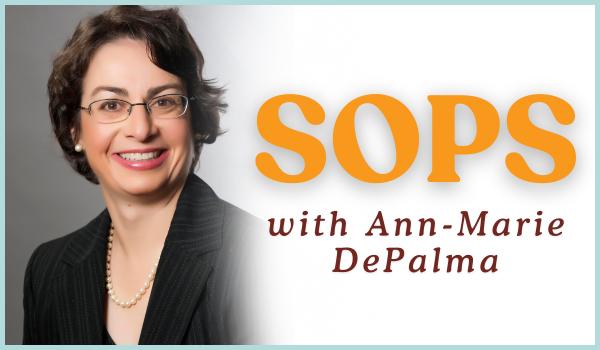
Many teams and practices understand the importance of documenting standard procedures. Yet, with the hustle and bustle of today’s dental practice, there is never enough time to get it all done. Whether that be appropriate patient notes and record keeping to practice logistical requirements, the ball of documentation usually gets dropped. Clinical and administrative patient documentation has taken a giant leap forward the last few years with the advent of artificial intelligence into dentistry (contact me to learn how AI can help you, your practice and your patients in a variety of ways).
Yet even with AI and the promise that it brings, there are still many areas where the documentation piece falls short. Think about a new team member, how does she/he learn about the practice and the onboarding process, the seasoned team member who needs to learn a new procedure, or the documentation requirements that HIPAA and OSHA require? With My Dental SOP the practice and team members have a ready-made template to standardize information.
As a dental practice management software trainer for years and then a training manager for a small DSO, I saw first-hand how documentation falls short. Within the DSO for example, there were numerous Google Drive documents that were never updated correctly. Or as a PMS trainer, documentation on the “why” of the software and its appropriate use were never maintained, whether for new team members or for the entire team following system upgrades. With those experiences and my clinical hygiene background, here are a few suggestions to align your team on documentation procedures.
Administrative team members:
- How are patients greeted
- How is the phone answered
- How is the new patient intake handled
- How are patient financing and scheduling handled
- How are third-party claims processed
- Who handles patient case presentations/consults
- Who handles daily/monthly/weekly/quarterly/annual reporting
- How does the practice management software (PMS) handle administrative tasks and documentation
- What technology is available for patient engagement and how is training handled
- What is the practice’s onboarding process – what trainings are needed/who handles
- Who participates in morning huddles/weekly/monthly meetings and their responsibilities
- What are the core mission/vision/values of practice
Clinical team members:
- Who sees new patients first, doctor(s) or hygienist(s)
- How are assisting duties and responsibilities handled
- How are operatories set up
- Who takes and how often are radiographs taken and other imaging protocols
- Who handles periodontal and restorative charting duties and clinical notes
- Is there a dedicated hygiene assistant
- What is hygiene patient flow look like
- How is recare scheduled and maintained
- How are patient hand-offs handled with administrative team
- What are common procedures performed by the hygienist and doctor/assistant
- What clinical technology is available and how is training handled
- How does the practice management software (PMS) handle clinical tasks
- What is the practice’s onboarding process – what trainings are needed/who handles
- Who participates in morning huddles/weekly/monthly meetings and their responsibilities
- What are the core mission/vision/values of practice
All team:
- Who is the OSHA/HIPAA officer(s)
- How and where are the OSHA/HIPAA documentation kept
- How is training documented (when, where, who participated)
- Is there a practice policy/procedure/manual available, updated regularly and all team members accessed
There are so many areas that need to be customized for individual practices. Having a one-size fits all solution doesn’t work – dentistry is the same in practices, yet so very different. If you need help customizing your My Dental SOP or after reviewing the list above in beginning your documentation journey, contact me. I am looking forward to making your documentation journey as streamlined and stress-less as possible.
Ann-Marie DePalma, CDA, RDH, MEd, FADIA, FAADH, FADHA
depalmaannmarie@gmail.com
https://depalmaannmarie.com
